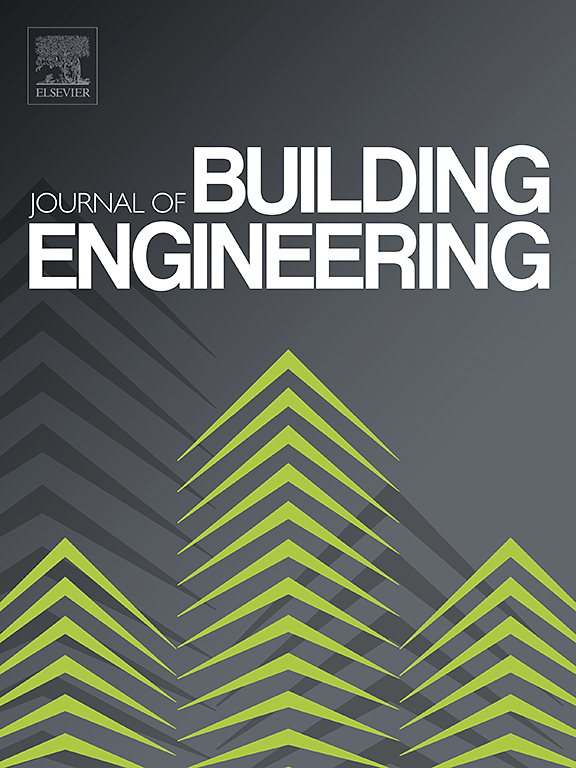废玻璃作为自密实混凝土粗骨料部分替代品的分析:实验和机器学习研究
IF 6.7
2区 工程技术
Q1 CONSTRUCTION & BUILDING TECHNOLOGY
引用次数: 0
摘要
随着减少废弃物和回收利用对环境造成的负担日益加重,混凝土行业已通过多种方式用混凝土成分元素替代废弃玻璃。本研究全面分析了在自密实混凝土(SCC)中使用不同比例(0%、5%、10%、15% 和 20%)的废玻璃骨料(WGA)作为粗骨料替代品,以及使用一致的 20% 硅灰(SF)作为水泥替代品的情况。除了确定自密实混凝土的力学性能、耐久性能和微观结构性能外,本研究还采用了先进的机器学习(ML)技术来准确预测其力学性能。通过采用坍落度流、J-环流和 V 型隧道时间,对新鲜 SCC 的流变学进行了评估。机械性能通过抗压强度、劈裂拉伸强度和抗折强度进行评估,而电阻率、透水性、快速氯化物渗透性(RCPT)和加速砂浆棒试验(AMBT)则用于评估耐久性。扫描电子显微镜(SEM)和能量色散 X 射线光谱(EDS)分析进一步检验了微观结构。在 SCC 中用恒定的 SF 取代 WGA 可改善流动性,同时降低其通过能力。此外,研究还表明,与含有 0 % WGA 和 20 % SF 的参考混合料相比,在 SCC 中添加 5 % WGA 和 20 % SF 会导致 28 天后抗压强度和抗折强度分别略微降低 4.53 % 和 3.61 %,从而产生良好的结果。进一步的评估结果表明,添加 WGA 和 SF 后,SCC 的耐久性能得到了提高。在 EDS 分析中观察到的 Ca/Si 比率的扩大对强度有显著影响,而在 SEM 分析中检测到的空隙和裂缝模式则导致加入 WGA 后的微观结构性能变差。尽管两种 ML 模型都表现出了极佳的回归系数(R2),但随机森林模型的结果显示出了更高的准确性和可靠性。本文章由计算机程序翻译,如有差异,请以英文原文为准。
Analysis of waste glass as a partial substitute for coarse aggregate in self-compacting concrete: An experimental and machine learning study
With the growing environmental burden to minimize debris and recycle, the concrete industry has replaced wasted glass with concrete composition elements in multiple ways. This study provides a comprehensive analysis of integrating waste glass aggregate (WGA) at various proportions (0 %, 5 %, 10 %, 15 %, and 20 %) as substitutes for coarse aggregates along with a consistent 20 % silica fume (SF) as cement replacement in self-compacting concrete (SCC). In addition to determining the mechanical, durability and microstructural properties of SCC, this research also uses advanced machine learning (ML) techniques to predict the mechanical properties accurately. By employing slump flow, j-ring flow and v-funnel time the rheology of fresh SCC was evaluated. Mechanical properties were assessed through the evaluation of compressive, splitting tensile, and flexural strength, whereas electrical resistivity, water permeability, rapid chloride permeability (RCPT), and accelerated mortar bar test (AMBT) were employed to evaluate durability. The microstructure was further examined using scanning electron microscopic (SEM) and energy-dispersive X-ray spectroscopy (EDS) analysis. The replacement of WGA with a constant SF in SCC improved flowability while lessening its passing ability. Furthermore, the study indicated that adding 5 % WGA along with 20 % SF to SCC resulted in a slight decrease of 4.53 % in compressive strength and 3.61 % in flexural strength compared to the reference mix containing 0 % WGA and 20 % SF after 28 days, which yields a favorable outcome. Findings from further assessments revealed that SCC's durability characteristics were enhanced by adding WGA and SF. Expansion of the Ca/Si ratio observed in EDS analysis significantly impacts the strength, while voids and cracks patterns detected in SEM analysis, result in an inferior microstructural performance with the incorporation of WGA. Notwithstanding both the ML models exhibiting excellent regression coefficients (R2), the random forest model showed superior accuracy and reliability in its results.
求助全文
通过发布文献求助,成功后即可免费获取论文全文。
去求助
来源期刊

Journal of building engineering
Engineering-Civil and Structural Engineering
CiteScore
10.00
自引率
12.50%
发文量
1901
审稿时长
35 days
期刊介绍:
The Journal of Building Engineering is an interdisciplinary journal that covers all aspects of science and technology concerned with the whole life cycle of the built environment; from the design phase through to construction, operation, performance, maintenance and its deterioration.
 求助内容:
求助内容: 应助结果提醒方式:
应助结果提醒方式:


